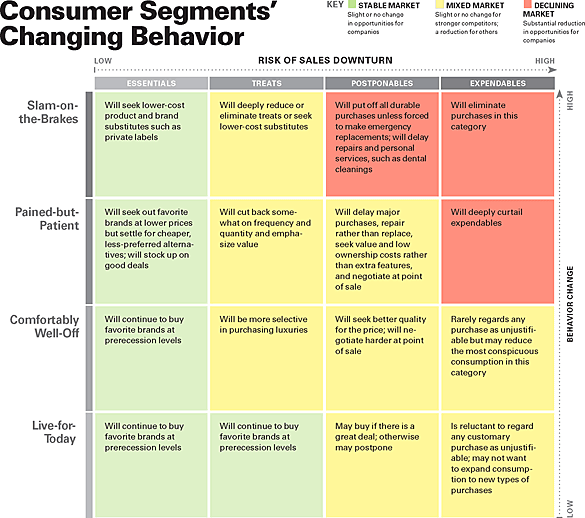
2020 has flipped the world upside down. Nobody had plans in place for a global pandemic. In fact, all plans were readjusted, postponed, or even thrown out the window. However, if there is one thing we’ve learned, it is that all types of planning are essential. Scenario planning is a crucial part of creating flexible long-term plans. By focusing on your clients, planning for different scenarios, and creating long-term innovative solutions, you can open new doors and opportunities.
Scenario Planning for Financial Services Marketers
Early in the pandemic it was clearly important for financial services marketers to address the immediate concerns of their customers and the impact the COVID-19 pandemic was having on them. Beyond this reactive messaging lies a window of opportunity that can strengthen savvy brands and cement strong relationships with their clients and prospects. To capitalize on this opportunity, brands and their marketers must shift their gaze to intermediate and long-term planning to ensure that they are prepared to address their customers’ needs regardless of the scenarios that may arise.
Scenario Planning During Uncertainty
The coronavirus pandemic has brought about a dramatic change to both the short and long-term plans of financial services companies. Long-term plans have rapidly become urgent in the near-term, and the curve of adoption of innovative products has accelerated amongst consumers. At this point, planning one month into the future can be challenging, while planning 5-10 years down the road can feel futile. The often-overlooked discipline of intermediate planning is becoming more crucial than it has been in recent years.
Financial services marketers should be planning for a number of different scenarios, regardless of the time horizon. We should look at possible outcomes that include the pandemic subsiding in 2-3 months, 6 months, or 12+ months. We should be ready for a second wave that many have predicted to come this Fall/Winter. We should consider that things could return to a new version of normal that includes drastically different consumer behavior than our status quo.
Map Out The Different Scenarios
By mapping each of these scenarios and starting to build communications plans for each of them, you will be prepared to execute your plans regardless of the information that we receive on a week-to-week basis. Companies that have strategic, adaptable, and organized approaches will come out ahead and be ready to respond faster than their competition. By acknowledging the various scenarios that we may face, we can start to determine how we operate in each of those possible environments.
Know Your Brand
Many new brand campaigns that were going to launch were paused, saw shifts in messaging, or delivered across different channels. As we map different scenarios for how to communicate with our customers, one thing should always stay consistent: who you are. In times like these, we will undoubtedly see opportunistic marketers try to shift their messaging outside of their strike zone and end up promising things that they cannot deliver. Even worse, we will see brands that fail to stand out or stand for what makes them uniquely who they are.
Communications planning for any time frame should always start with your brand and stay true to the principles that your brand stands for. Depending on the size and service category of a company, there will be different levels of documented brand strategy. However, all financial services companies should start with the same questions, whether the answers have been documented for decades, or they are answering them now for the first time.
“In times like these, we will undoubtedly see opportunistic marketers try to shift their messaging outside of their strike zone and end up promising things that they cannot deliver.”
Establishing a Brand is Essential Regardless of Your Company’s Size
Understand the reason that your company is in this business. Know your values. Clearly define what makes you different or at least uniquely you. Whether you are marketing a global banking brand or you are an individual advisor, you must understand what unique value you bring to your specific market and use that to your advantage. Brands that start with this foundation will have much clearer guideposts to follow when making decisions about consumer communications.
Create, Augment, or Redefine Your Customer Personas
When looking at how you will address your clients and prospective clients, a great place to start is with personas. You have likely segmented your audiences based on a number of different attributes in the past, but those may be shifting based on new variables that have become more important in recent months. Reevaluating your personas and understanding the changing needs, attitudes, or even demographics of your audiences will help to determine the appropriate strategy to engage with them.

Harvard Business Review published this view of changing consumer behavior in an economic downturn. Source: Harvard Business Review, April 2009
This is where we look at the data. At larger companies, you can collaborate with other departments or your analytics team to identify real-time indicators of a client’s financial health or changes in overall behavior. For more nimble organizations, this may be information that you draw upon from years of personal relationships with your clients. By segmenting your customers and understanding their current situation and motivations, you will be able to better empathize and genuinely serve them.
Redefining The Customer Journey
Another area of your marketing strategy that may feel like it is upheaval is your understanding of the customer journey or path-to-purchase. More than ever there will be life events that trigger a need for a solution that you offer. There will also be attitudes and a mindset that accompanies each of these milestones along a path to purchase.
However, in the different scenarios that you are planning, there will be varying degrees to which these micro-moments and accompanying emotions and actions will be impacted by the coronavirus crisis. Clients may be experiencing cash flow pressures or the perception that these pressures may be on the horizon. Often, in times of crisis, people default to what is known as a flight-to-quality or a flight-to-safety. Clients may seek less risky investments, more established banks or financial service providers, or even a different individual advisor based on the perceptions that they may have. By reevaluating the customer journey and mapping it to the scenarios that you have planned for, you can ensure that you are meeting your customer where they are, understanding what they feel, and providing appropriate solutions to their problems.
This may lead to temporary, new versions of your customer journeys that take these factors into account until things return to normal. Not knowing when things will return to normal, or what normal even is makes this a worthwhile endeavor.
"By reevaluating the customer journey and mapping it to the scenarios that you have planned for, you can ensure that you are meeting your customer where they are, understanding what they feel, and providing appropriate solutions to their problems."
Match Your Content Strategy to These Scenarios
Once we have an understanding of our customer and the journey that they are going through, we must match our communications to their needs. Don’t just send your customers communications. Send them solutions that are tailored to them. Personalization is not just entering their name in the subject line of a newsletter. It’s about providing the right information, solutions, offers, or service when your customers need it. Again, think about the advantages you have when addressing these needs within your content.
Large organizations may be able to address certain needs with large investments in technology, automation, or AI that responds to customer needs and addresses them. Smaller organizations may have the ability to offer more 1:1 communication about what’s happening in the markets or evaluating each client’s personal financial situation. Campaigns can and should include human contact if you are an organization that can deliver on this type of promise.
Crafting content that not only presents appropriate products, but educates customers on contactless experiences, market volatility, operational preparedness, health and safety measures, and how best to engage with your firm can all find the right place for each individual customer. A blanket approach that spreads these messages at seemingly random times will not have the same impact.
Don’t Let Lack of Resources Hinder Marketing Innovation
Jeremy Balkin, Head of Innovation at HSBC: “Don’t let a lack of resources or the perception of a lack of resources be an excuse. If anything, to separate the winners from the losers when it comes to innovation, the true innovators in any industry are those who are gritty, who are resilient and resourceful.”
The shift to contactless payments, mobile and internet banking, and more novel models of customer service have come faster than many financial services companies planned for. Many have responded very well to this. Now, these companies must continue to innovate and build upon the products that are in the market to continue to serve their customers. As marketers, we should also be thinking about innovation so that the customer experience and accompanying messaging can match or exceed the level of innovation of the company as a whole.
By starting with the process above and reevaluating your customers, their mindset, their journey, and messaging that aligns with each of those things; you will be poised to uncover and capitalize on opportunities. Consider applying insights from these steps to other marketing channels, including lead scoring and predictive modeling, customer service automation, content around digital products and services, your social media messaging strategy, and personalization across every channel. We are certainly in an unprecedented and rapidly changing time, but by planning for each scenario and arming yourself with the right customer insights, you can still win in this climate.
Financial Services Marketing Agency
LaneTerralever is a marketing agency focused on creating meaningful customer experiences based on deep strategic insights. We develop growth marketing, branding, and digital innovation strategies for a variety of institutions, including regional banks, mortgage lenders, and payment providers, just to name a few. We’re proud to have called OneAZ Credit Union, National Bank of Arizona, Heartland Payment Systems, and TSYS our client partners. Reach out to us and ask about our free financial services digital journey assessment, which will help you and your team identify your biggest opportunities for growth.


